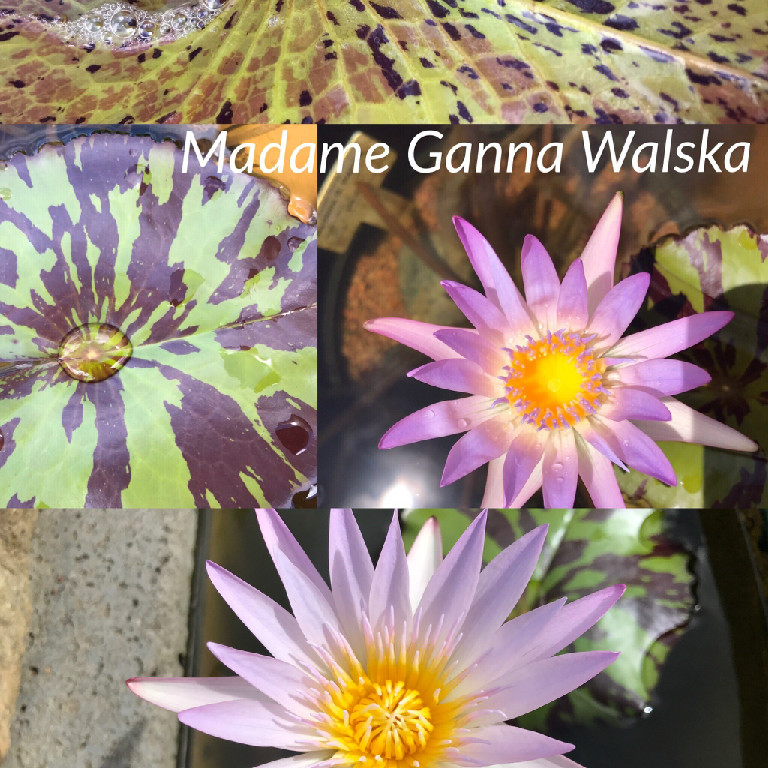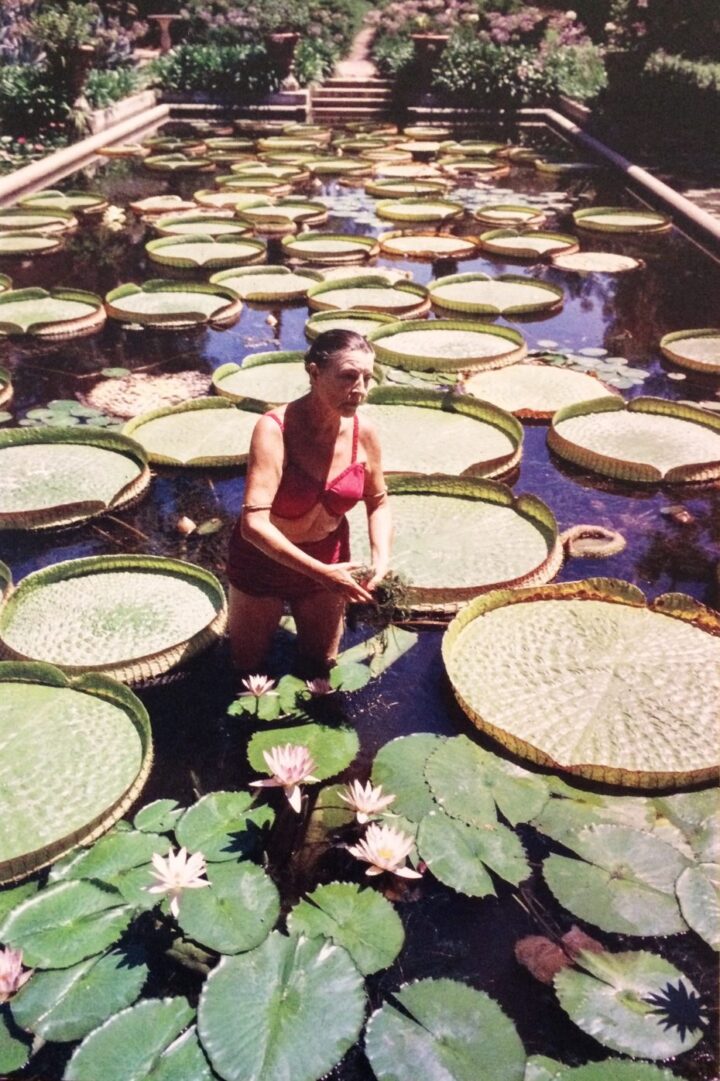The round, slightly ruffled leaves float on the surface of the water. A spiked flower stands up six inches above the surface, with cool lavender-pink petals and a canary yellow center. This water lily bloom is Nymphaea Madame Ganna Walska. With pointed, stellated petals it is one of the most fragrant water lilies, especially on a first day blossom. It opens and closes each day for four days consecutively. When the lily opens its petals on the first day, it is filled with an intoxicating nectar cup that draws in both honeybees and humans – nature’s divine golden chalice. The second day bloom changes from female to male and remains male for the remaining bloom days. This tropical water lily is one among 42 varieties of lilies we carry at Garden Ponds Nursery in Kilauea.
Madame G. Walska is a viviparous lily, meaning it makes keiki from the center of the leaf. The pads are green with light maroon mottling that darkens as the leaves mature. The pads work to absorb sunlight, and this lily loves the year-round subtropical sun here on Kaua’i. Madame G. Walska likes five or more hours of full sun and will bloom year-round here in Hawai’i. It is an excellent addition to water container gardens, providing shade and habitat for pond friends, and will happily live planted in a pot at the bottom of a container that holds water, sitting at about 6-18 inches deep. The blooms will emerge from the center of the plant or the crown and grow up and out of the water, opening in the morning, and closing in the evening. This lily should be fertilized each month to keep blooms going all year. We recommend repotting every 6-9 months to keep it happy in its environment.
Madame G. Walska was hybridized by Jack Wood and was named after the famous socialite, Madame Ganna Walska. A notoriously eccentric Polish opera singer, Madame had a voracious appetite for unique plant specimens, and would go great lengths to obtain many rare and unique plant species for her garden estate in Santa Barbara. After a failed opera career (and six marriages), she instead directed her efforts into her garden. What was once meant to be monastery for Tibetan monks became the botanical garden that is called “Lotusland”, when WWII made it impossible for the monks to get visas.
The garden featured large ponds with both water lilies and lotuses, bromeliads and fern gardens, cactus, aloe and succulent gardens, a Japanese garden, and a statuary amphitheater, featuring stone-carved characters of theatrical dwarves from France. When Ganna Walska died in 1984 at Lotusland, she left her garden and her entire estate to the Ganna Walska Lotusland Foundation, to ensure that her legacy would remain intact through the gardens she had curated. Today, it is a public botanical garden and an important preservation effort for rare and unique plant specimens.
If you have an interest in starting your very own water garden and are interested in a gorgeous and generously blooming water lily, we recommend this one to you. Water lilies are an important part of a balanced water garden ecosystem. They provide much-needed shade cover to the underwater plants, fish and snails. They even provide a place for dragonflies, mayflies and damselflies to lay their eggs, woven into the fabric of the water lily leaves. The balanced ecosystem of a water garden has fish, snails, underwater clarifying plants and the shade cover of a water lily. Mosquitos do not stand a chance when there is a water garden in the neighborhood because it gives the mosquitos a place to lay their larvae which are then eaten quickly by the fish. Not only that, water lilies, especially ones like the Madame Ganna Walska, are excellent conversation starters! Let us know how your Madame G Walska is growing by tagging a photo on our social media: Instagram: @gardenpondskauai and Facebook: Garden Ponds Kauai.


Trish Lee
How wonderful to see you THRIVING!!
Much love Ken and Jan
💐🙏❤️
Trish
💕